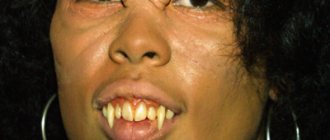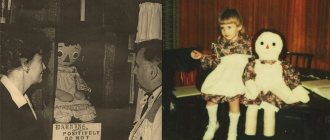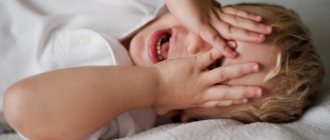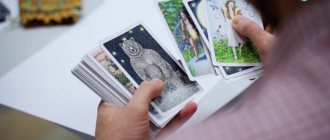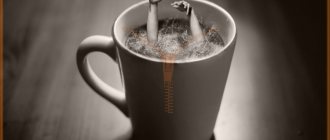April 03, 2021
Who among us doesn’t remember the line from the famous children’s song “We will not forget our calling - we bring laughter and joy to people!” Indeed, most children and adults associate clowns with funny circus characters who harmlessly amuse the audience. But some people, at the mere mention of these painted clowns, begin to tremble and are overcome by a strong feeling of anxiety.
This illness is not recognized as a psychiatric disease, but is included in the list of phobias. The fear of clowns is scientifically called coulrophobia . This diagnosis began to be made quite recently, in the late 80-90s of the last century. It comes from the ancient Greek word "kōlobathristḗs", which means "man walking on stilts".
General information
Coulrophobia is a pathological fear of clowns and mimes . It is considered a generally recognized phobia and is listed in the International Classification of Diseases, 10th Revision (ICD-10) under the code F40.2 of specific (isolated) phobias limited to very limited situations.
Many people don’t know what the fear of clowns is called, but after the release of the film “Harry Potter and the Prisoner of Azkaban” this problem was given wider publicity. The term coulrophobia refers to neoholism and comes from the Greek word “colbatbristes” - translated as walking on stilts.
Phobias should be strictly distinguished from delusions. With phobic syndrome, the patient is clearly aware of the obsessive, painful nature of the fear that overcomes him, which is a distinctive feature of the neurotic level of disorders.
Still from the film “Harry Potter and the Prisoner of Akaban”
Pathogenesis
The mental disorder is based on features of clown costumes and makeup that exaggerate facial features and individual body parts, including hands, legs and noses. These body deformations can be perceived by a person not only comically, but also frighteningly, since they are too similar to a person. These experiences can develop into a phobia, especially in mentally unstable people and in particular in children. In addition, human fear of clowns is fueled by their inappropriate (antisocial) behavior, which seems ridiculous, rude, as well as the image of the “evil clown” created by the authors in films and books, for example, the clown Pennywise.
Interesting! After the publication of books (in particular “It” by Stephen King in 1985) and the release of films exploiting the image of the “evil clown”, literally in just a few decades they managed to root it in the mass consciousness to such an extent that the founders of the British Bestival festival had to cancel it in 2006 planned clown theme, as many people who bought tickets contacted them and spoke about their coulrophobia. All these phenomena cause irreparable damage to the profession of a jester.
A 2008 study by the University of Sheffield found that many children (approximately 80%) find clowns “terrifying and incomprehensible”, so most do not want them in hospital decor, clothing or at children's events.
Treatment
How to get rid of coulrophobia
Fear cannot be treated with medication using any medications. A positive effect occurs only with the use of psychotherapeutic methods.
To achieve recovery, a psychotherapist uses the following techniques:
:
- The doctor explains to the patient that even the most intense fear is not capable of causing significant harm to his health. And coulrophobia is a temporary phenomenon.
- Identifying a traumatic situation in the past, searching for the causes of fear in the patient’s thinking and character traits. The patient reconsiders his personal drama and changes his attitude towards what happened. As a result, internal contradictions are resolved.
- Gradual contact with the object of your phobia. The patient meets an actor playing the role of a clown. After which, he participates in the process of applying makeup to the actor’s face and in choosing the appropriate costume.
- A person experiencing fear himself puts on the image of a comic character and understands that performing the image of a jester in front of an audience is a clearly rehearsed role with a written script.
- Watching good films and cartoons featuring pleasant and cute clowns.
When experiencing fear of the appearance of a jester, the patient must understand that his reaction may be completely natural, due to some personal psycho-emotional reasons in the depths of the subconscious.
Classification
Phobia of various funny and doll images is divided into the following types:
- helophobia - fear of laughter and humor;
- cherophobia (chairophobia) – fear of fun;
- Pediophobia is a terrible fear of dolls and toys.
Depending on the severity of the course, colurophobia can be mild or acute, when not only upon meeting, but also at the risk of seeing a clown, a person begins to have a panic attack.
How to get rid of coulrophobia
To get rid of a phobia, you need to replace the negative image of a clown with a positive one and work through psychological trauma, if any. This is only possible through coming closer to fear. Individual psychotherapy, cognitive behavioral therapy, and hypnosis are used to treat phobias.
How to help your child
To help your child, you need to organize a meeting with the artist playing the clown. The child must get to know him personally and see the path of transformation. After this, you can invite the child to dress up as a clown himself.
Advice from psychologists
You can cope with the fear of clowns on your own only at the initial stage and with a clear understanding of the cause of the phobia. In other cases, you need to consult a psychologist. He will help you understand what exactly frightens you, find the subconscious causes of the phobia, and draw up a treatment plan.
What is the purpose of working with a psychologist:
- awareness of the irrationality of the fear of clowns;
- search for psychotraumas;
- change in attitude towards a traumatic situation;
- search for destructive patterns of behavior, the influence of fear on life;
- restructuring destructive thinking and behavior;
- mastering self-control and self-regulation techniques;
- getting closer to the object of fear;
- Trying on the image of a clown.
At an advanced stage, with severe exhaustion and lack of sleep, treatment with hypnosis is indicated. This will make it easier for the specialist to get into the depths of the subconscious, and the client will be able to relax and recover.
It is important! For complications such as panic attacks, hallucinations, psychosis, and insomnia, medication is indicated: sleeping pills, tranquilizers, sedatives, antidepressants. You cannot self-medicate. Only a doctor can prescribe the drug and select the dosage.
Independent work with a phobia
How to get rid of your fear of clowns yourself:
- Try to understand what exactly scares you. Make a plan to address this cause. Maybe you're scared of not being able to see a person's true emotions, or maybe you're scared of an artificial smile. In this case, your distrust of the world is to blame. Or you are afraid of being ridiculed. Why? Is it because of insecurity, negative memories from the past, or something else?
- Throw a costume party.
- Ask a loved one to dress up as a clown. Do you trust him?
- Avoid watching horror and thriller films that contain clowns.
It is important! If you cannot independently determine the cause and overcome the fear, then consult a psychologist.
What to do during a panic attack:
- Take deep, long breaths in and out.
- If you can’t calm down, then breathe into the bag or into your folded palms.
- Massage your earlobes and little fingers (soothing points are located there).
- Remember or imagine something pleasant.
- Go to a quiet place.
- Repeat phrases for self-hypnosis that you are calm and your fear is irrational.
Causes
There are a number of potential reasons for the development and spread of coulrophobia among the population:
- falling under the criteria of the “uncanny valley” - the hypothesis that any objects that look or act approximately like a person (too similar, but not exactly the same) can evoke feelings of hostility and disgust, discomfort and fear, thus the appearance of clowns is not changed to the point of being pleasant, but not distorted enough to be unrealistic, there is still too much humanity in it;
- too bright makeup that hides the true features of the face;
- antisocial (“transgressive”) behavior of clowns;
- the influence of pop culture and the formation of the "evil clown" archetype - most demonstrated in Stephen King's novel It, in the Batman franchise, exploited by wrestlers, singer-songwriters, artists and musicians;
- real-life serial killers, such as John Wayne Gacy, who raped and killed 33 young guys, was a member of the “Jolly Joker” club in the images of the funny clown “Pogo” and the serious clown “Patchy”, performed at various events, lured teenagers to him, drugged, treated him to drugs, offered money and persuaded him to homosexuality, over the years he moved on to murder and torture, it is believed that he is the prototype of the clown Pennywise and the hero of many films such as “House of Clowns”, “Carnival of Souls”, “Killer Clown”, “Fear” clowns”, “Coulrophobia”, “Secrets of a clown”, “100 tears”, etc.;
- hooligan behavior of some people dressing up as clowns and scaring people on the street.
John Wayne Gacy Jr., Serial Cleaver Killer
Consequences of a phobia of clowns
Coulrophobia is not a self-limiting anxiety, even if there is no object of panic. In reality, few people encounter performers in disguise, so fear may not be reinforced by the object, but manifest itself in another way.
A lot of trouble is caused by others who, having learned about the “funny” phobia, mock and show misunderstanding. Therefore, coulrophobes are more likely to take offense at people who make fun of their weaknesses.
Many people think that they can avoid the discomfort of a phobia if they do not attend circuses and festive events. However, an unexpected encounter with a frightening object may occur, so coulrophobes need corrective work.
Symptoms
Coulrophobia can cause a person to experience irrational, panicky, uncontrollable, obsessive and painful fear, forcing him to avoid situations with an increased risk of meeting the object of fear, in this case a clown. Thoughts about him or a meeting in real life can cause such various mental and vegetative reactions as:
- lack of air - a feeling of suffocation and spasm in the throat is created;
- strong heartbeat, increased pulse;
- numbness - a feeling that the whole body is shackled with fear and it does not obey;
- profuse sweating;
- trembling throughout the body;
- nausea and vomiting in the throat;
- strong emotions that cause screaming, tears or aggression;
- feeling of madness.
Coping methods
Usually, psychological techniques that help children are sufficient to treat an adult. Visualization (materialization of thoughts) is considered effective when one gets acquainted with funny clowns and clowns in pictures and photos, wearing cute toys that will not do anything bad. It's good to play with them, taking on their role. This will make it possible, under the guidance of a psychotherapist, to overcome a negative attitude towards the character. Then, when the nervous state normalizes and the negative emotions subside, you can organize a real meeting in the presence of other people with the object of your fear.
An effective method of overcoming coulrophobia is the visualization of funny clowns in the form of drawings or toys.
In especially severe cases, special techniques are used:
- Relief of the condition with medications (antidepressants and sedatives) to relieve panic attacks and increased nervous excitability.
- For severe panic attacks, hypnotherapy sessions are prescribed. A person stops reacting sharply to sources of fear after influencing the work of the subconscious.
- Psychotherapeutic techniques help relieve tension and overcome phobias: a conscious attitude towards fear, working through the reasons for its occurrence, drawing, describing the fear and taking it under control.
Tests and diagnostics
To measure the severity of phobias and anxiety, the Zang scale is used. The Severity Severity Assessment is based on self-report and is a 20-item test asking how often the patient has experienced certain signs of anxiety over the past week (often, very often, rarely, or sometimes). The questionnaire focuses on the frequency of states of unreasonable fear, confusion, grief, fatigue and such physiological manifestations as headaches , tremors , tachycardia , dizziness , etc.
In children
The fear of clowns is called a childhood fear and usually begins at an early age, sweeping through life and developing into a phobia. The thing is that young children are “more receptive” to objects that have a familiar body shape combined with an unfamiliar distorted face. This is confirmed by correlation data with the “uncanny valley” effect.
Paul Salkovskis believed that children are alarmed by the unusual behavior of jesters, and everything wrong, out of the usual picture and unfamiliar causes unconsciously negative emotions. The painted face and painted smile make it difficult to understand the mime's true mood, and also creates the feeling that there is something dark, sinister and dangerous inside. Therefore, if clowns are invited to a children's party, it is better for an adult to be present and, if necessary, be able to notice and help the child cope with negative emotions.
What is coulrophobia
What is coulrophobia? Coulrophobia is the fear of clowns. The image of a comedian with a red nose evokes hostility and panic. A wide smile is associated with a grin, and makeup or a mask evokes associations with duplicity, hidden evil and aggression. Coulrophobia is not an independent mental disorder, but it is conventionally classified as a form of anxiety-phobic disorder.
This is interesting! Sometimes coulrophobia is called the fear of dolls, but this is true when we are talking about figurines of jesters. In general, the phobia of dolls has its own name - pediophobia.
Diet for coulrophobia (fear of clowns)
Diet for the nervous system
- Efficacy: therapeutic effect after 2 months
- Timing: constantly
- Cost of food: 1700-1800 rubles per week
As everyone knows: a healthy body means a healthy mind, so a healthy lifestyle is very important for mental balance. People who abuse caffeine and energy drinks, sweets, nicotine and alcohol, and also do not have normal sleep are more prone to hysteria. In addition, it is important to strengthen the nervous system by consuming:
- many different fruits and vegetables;
- nuts;
- seafood;
- dietary meat;
- fermented milk products;
- cereals.
